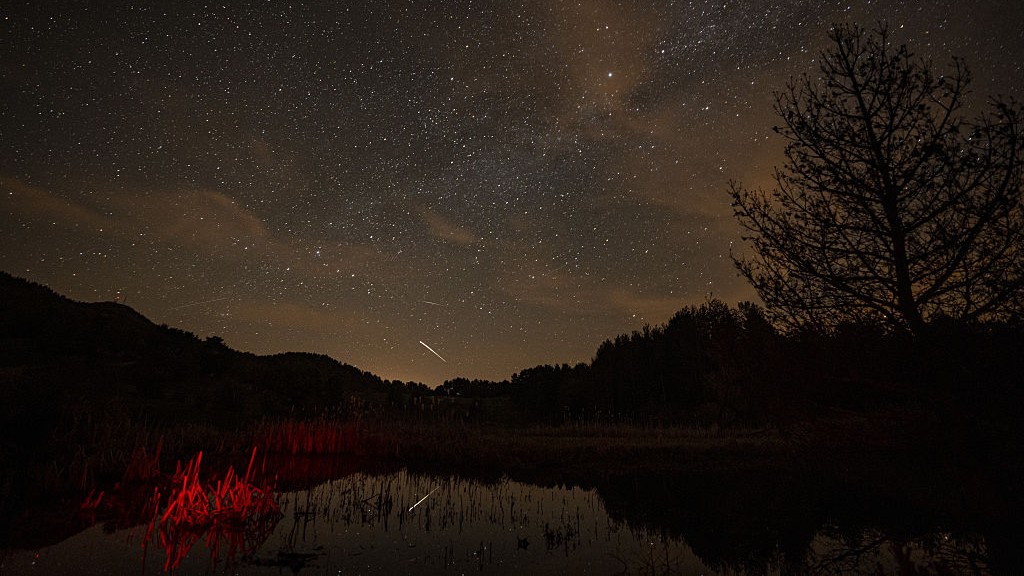Incredible photo catches the sun rising behind the world's largest telescope
The massive dome measures 305 feet (93 meters) in diameter, or about the size of a football field and stands 263 feet (80 meters) tall.

Construction of the world's largest telescope has reached its highest point with assembly of the roof's dome and large sliding doors that will shield the observatory.
The European Southern Observatory (ESO) recently shared new progress photos of the Extremely Large Telescope (ELT), the world's largest visible- and infrared-light telescope. The ELT is currently under development on the Cerro Armazones mountain in Chile's Atacama Desert and expected to see its "first light" by 2028.
ESO shared a stunning view of the ELT's construction, including one with a gorgeous, glowing sun rising up behind the telescope on April 12. The photo was taken by Eduardo Garcés from the Cerro Paranal mountain, home to ESO's Very Large Telescope, which is about 14 miles (23 kilometers) from the ELT, capturing a silhouette of the dome's structure surrounded by construction equipment.
The ELT reached a significant milestone recently with the completion of one of the dome's sliding doors — and assembly started on the second — marking the highest point of the dome's construction, according to a statement from the ESO.
ESO and Chilean flags were placed at the top of the telescope's dome as part of a Topping Out or Roofing Ceremony (called Tijerales in Chile) held on April 16, which included a traditional barbecue for workers on site and was live-streamed for industrial and institutional partners celebrating the milestone in Garching, Germany, according to the statement.
ESO shared an up-close view of the dome's roof structure and two flags streaming in the wind, which can produce powerful gusts in the Atacama desert. The two sliding doors located on the dome's roof open laterally and are designed to protect the telescope from the harsh desert environment. They will be closed during the day to shield the telescope from unwanted light and open at night for astronomical observations. The dome also includes a mechanism to seal the interior, preventing wind, rain, dust, and light from entering.

Garcés took a similar photo in August 2023, which shows a more skeletal frame of the dome without its protective cladding and underscores how construction has progressed in less than two years.
Get the Space.com Newsletter
Breaking space news, the latest updates on rocket launches, skywatching events and more!
Another recent progress photo taken on April 14 using one of the live webcams on site captured the bright Milky Way flowing above the telescope's dome, illuminated by stars shining in the night sky. Peeking out through the open roof is the white frame of the telescope's main structure that will support its optical equipment, including its primary mirror that measures 128 feet (39 meters) across — the largest ever made for an optical telescope.

The massive dome measures 305 feet (93 meters) in diameter, or about the size of a football field and stands 263 feet (80 meters) tall. Featuring a 130-foot-wide (39.3m) mirror, the ELT will study the universe in visible light to provide a more detailed view of potentially habitable exoplanets, the formation of the first galaxies, supermassive black holes, and the nature of dark matter and dark energy.
Join our Space Forums to keep talking space on the latest missions, night sky and more! And if you have a news tip, correction or comment, let us know at: community@space.com.

Samantha Mathewson joined Space.com as an intern in the summer of 2016. She received a B.A. in Journalism and Environmental Science at the University of New Haven, in Connecticut. Previously, her work has been published in Nature World News. When not writing or reading about science, Samantha enjoys traveling to new places and taking photos! You can follow her on Twitter @Sam_Ashley13.
You must confirm your public display name before commenting
Please logout and then login again, you will then be prompted to enter your display name.










